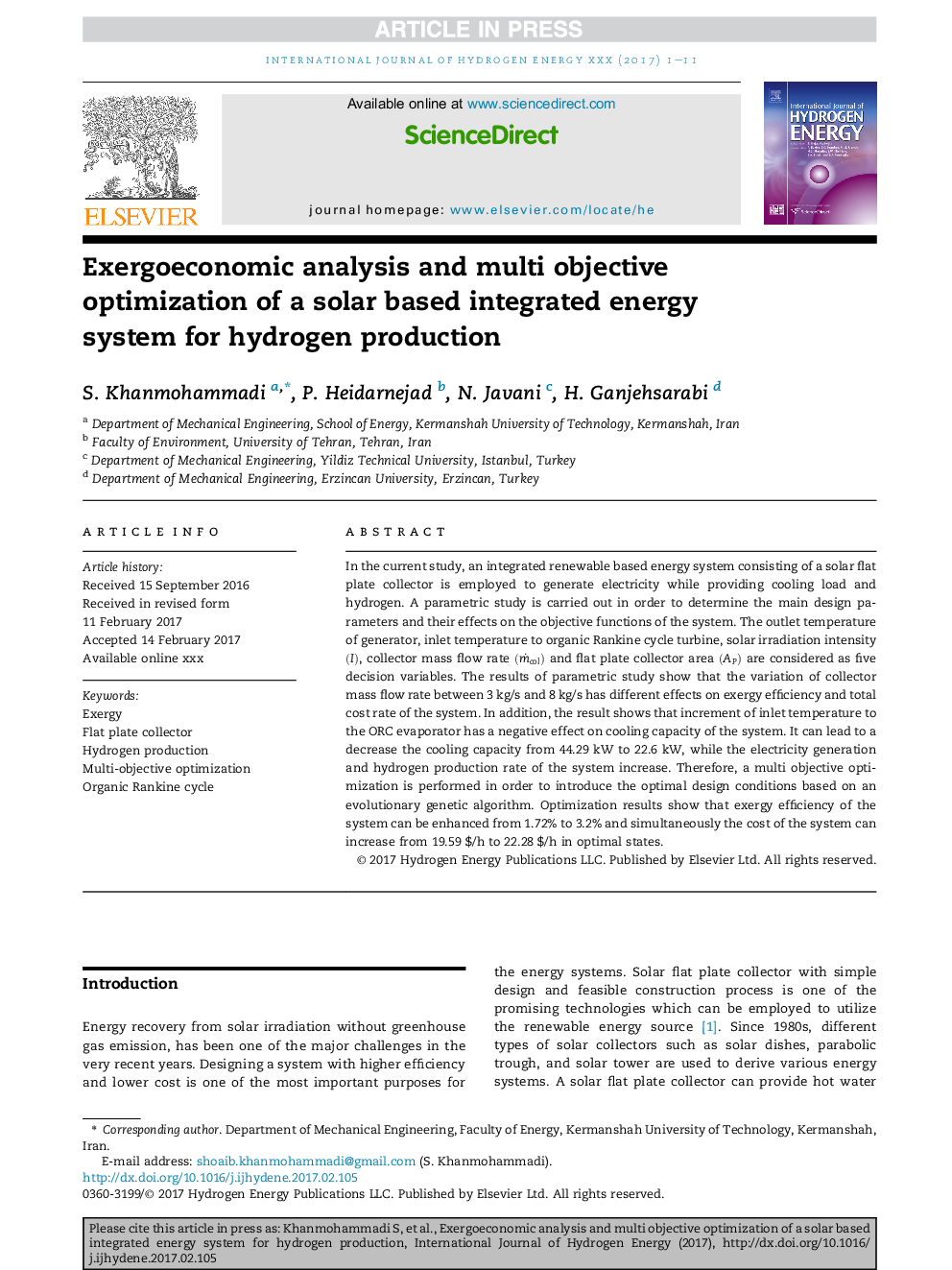| Article ID | Journal | Published Year | Pages | File Type |
|---|---|---|---|---|
| 5145998 | International Journal of Hydrogen Energy | 2017 | 11 Pages |
Abstract
In the current study, an integrated renewable based energy system consisting of a solar flat plate collector is employed to generate electricity while providing cooling load and hydrogen. A parametric study is carried out in order to determine the main design parameters and their effects on the objective functions of the system. The outlet temperature of generator, inlet temperature to organic Rankine cycle turbine, solar irradiation intensity (I), collector mass flow rate (mËcol) and flat plate collector area (AP) are considered as five decision variables. The results of parametric study show that the variation of collector mass flow rate between 3Â kg/s and 8Â kg/s has different effects on exergy efficiency and total cost rate of the system. In addition, the result shows that increment of inlet temperature to the ORC evaporator has a negative effect on cooling capacity of the system. It can lead to a decrease the cooling capacity from 44.29Â kW to 22.6Â kW, while the electricity generation and hydrogen production rate of the system increase. Therefore, a multi objective optimization is performed in order to introduce the optimal design conditions based on an evolutionary genetic algorithm. Optimization results show that exergy efficiency of the system can be enhanced from 1.72% to 3.2% and simultaneously the cost of the system can increase from 19.59 $/h to 22.28 $/h in optimal states.
Keywords
Related Topics
Physical Sciences and Engineering
Chemistry
Electrochemistry
Authors
S. Khanmohammadi, P. Heidarnejad, N. Javani, H. Ganjehsarabi,
